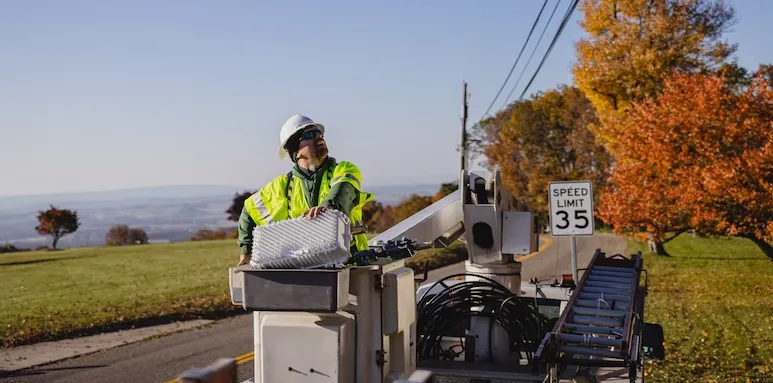Across the United States, millions of college students are sitting for their final exams in a very different environment than they anticipated. This year, there will be no large lecture halls filled with students. Instead, the COVID-19 pandemic forced higher education institutions to shift to remote or hybrid learning models, with students taking classes from laptops, in their dorm rooms, or their family’s home.
NCTA spoke with college students who are closing out a full semester of remote and hybrid learning. For some students, the pandemic has meant that almost a year of their college experience has been dominated by distance learning rather than on-campus life. Something that everyone could agree on, however, was the key role that technology and broadband have played in keeping their education going.
“Having a capable laptop and a reliable internet connection is vital to continuing my education remotely,” says Samuel Johnson, a sophomore at the University of North Carolina at Chapel Hill.
For students who did not have a home broadband connection prior to the pandemic, getting online quickly became a priority to continue their education. Since March, cable operators have been providing free and low-cost internet options for unconnected students to continue their learning online. Some companies are taking it a step further and working directly with colleges to ensure students have broadband access. For example, Comcast is partnering Lone Star Community College in Houston to identify and provide students in need with free and discounted service and working in partnership with Portland Community College in Oregon to purchase service directly for some students.
These programs have empowered hundreds of thousands of students to continue their remotely, ensuring that had the high-speed broadband networks needed to power the technology that makes distance learning possible. For example, Hallie Stravitz, a junior at the University of Maryland, has been using video-conferencing technology to stay in touch with both mentors and peers outside of class. “My professors all hold [extra] Zoom meetings so that we can have contact with them and other students,” she says. This has been particularly helpful to Stravitz and her classmates because, in the school’s distance learning model, a majority of her professors do not introduce new topics online. Instead, students are expected to watch recordings and then come to synchronous sessions prepared with questions.
For most students, video-conferencing technology has been at the core of making distance learning work. The significant investments that cable operators have made in the network infrastructure, more than $290 billion the past 20 years, have helped ensure connections can support both the upstream and downstream speeds needed for millions of students to take advantage of video-conferencing technology.
Thanks to these investments, the networks have handled drastic increases in internet usage throughout the pandemic — and that means students can continue learning.
“We wouldn’t have been able to do any of this just 10 or 20 years ago because we wouldn’t have had the technology to make it possible,” notes Sydney Yakowenko, a senior at Penn State University who took the quarantine and stay-home orders very seriously. “This is encouraging because we are able to be safe while learning and not halt our timeline of school or careers.”
Remote and hybrid education models have come with some unexpected rewards as well. Professors and administrators understand that this is a difficult time and, as such, have offered more flexibility in programs and classes. Zachary Holmes, a sophomore at the University of Oregon, notes that a number of his core courses were changed to a pass/fail grading system. “This has allowed me to put more effort into my major classes without jeopardizing my GPA,” he says.
In addition, the flexibility of remote and hybrid schedules has meant that college students can achieve a balance they may have not enjoyed before the pandemic. Many are focusing more on their health and fitness, or spending time outdoors. “Because I don’t spend any time going to and from campus or eating in the dining halls, I have a greater amount of time to go for walks, ride my bike, or go for a run,” Johnson explains. Stravitz, who stayed home for the semester, agrees. “Being at home afforded me greater flexibility in terms of healthy eating and exercising,” she points out. “It has allowed me greater control over how I spend my time, which has led to a more balanced lifestyle overall.”
From moving back home with parents, to coping with hours in front of a screen, virtual learning has been a challenge for many students. While they are leveraging technology to continue learning, they recognize that there are many other factors that will need to be addressed to better adapt the traditional education model for online learning. However, all five students remain optimistic about the future and recognize that online learning will likely be a part of education for years to come.









